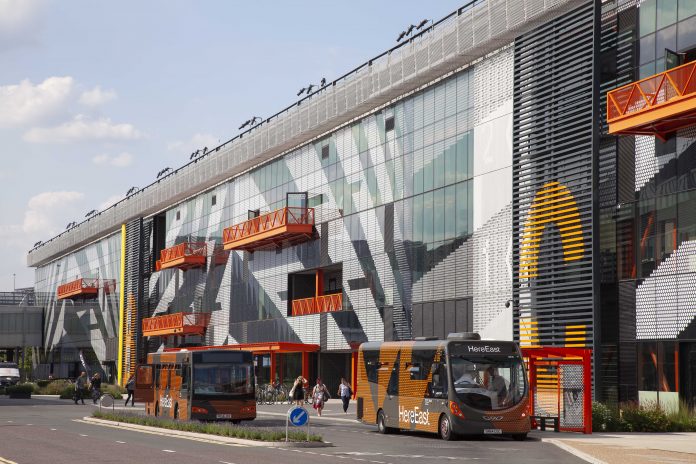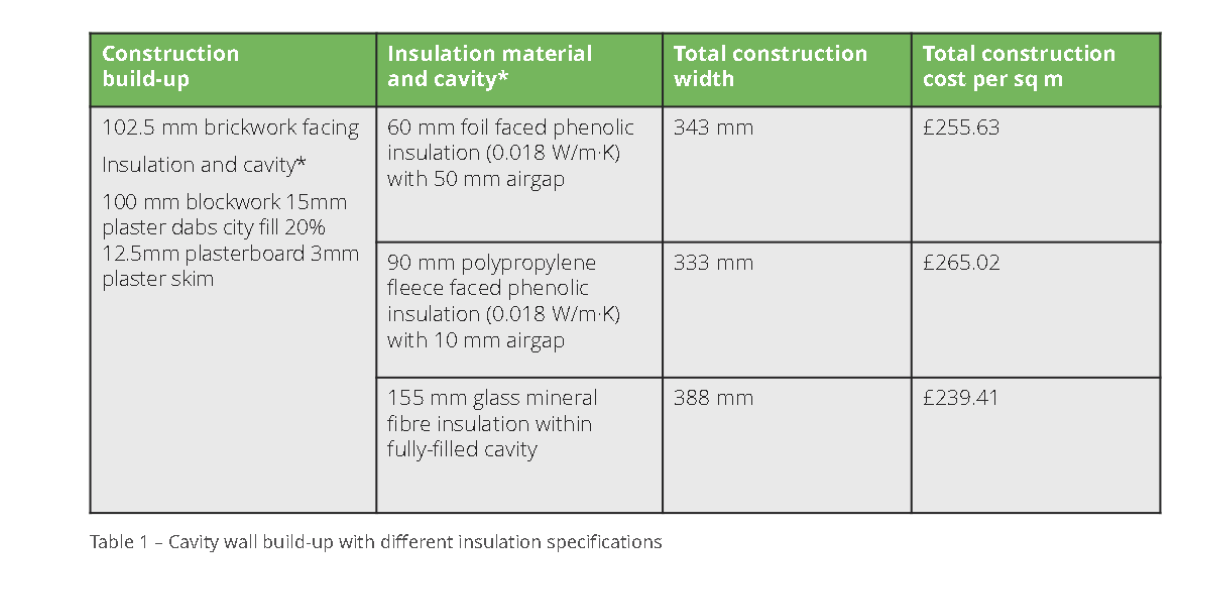Matthew Evans, head of technical GB at Kingspan Insulation UK, highlights how installing more thermally efficient insulation to extend useable floorspace in buildings, maintaining performance while improving RoI
To say that commercial property space comes at a premium would be a significant understatement. Current data shows that the sq m rental cost of top-grade office space now sits as high as £1,184 per year in the west end of London. In this market, it is unsurprising that developers are looking to extract the maximum lettable space from each available plot. Typically, this means adding floors by either building up or digging down, but attention should also be paid to the thickness of external walls.
As the regulations governing the energy efficiency of buildings have tightened over the past two decades, the walls of new buildings have had to be insulated to a higher level. Lower performing insulation products are cheaper, per sq m, to specify but a greater thickness of material is needed to achieve a target U-value. This can lead to thicker walls, which eat into the potential lettable floor space.
Research on cavity walled buildings has now shown that by specifying more thermally efficient insulation, it is possible to reduce construction depths. This increases available floorspace within a given footprint and can lead to returns of 1,000% or more on the additional cost of the insulation.
Research
As Adrian Pargeter discussed in the August edition the primary performance differentiator between insulation materials is their thermal conductivity. This is the measure of how well a material resists heat transfer through conduction. The lower the thermal conductivity (lambda value) of an insulation material, the more effective it is at preventing this heat loss. This means a slimmer thickness can be used to achieve the desired thermal performance, allowing thinner wall constructions.
Kingspan Insulation commissioned Currie & Brown to investigate how the use of wall insulation materials with different thermal conductivities could impact the available floorspace within commercial buildings and their overall value.
For the study, Currie & Brown generated a database of 29,727 buildings that are representative of the commercial building stock across the country (in terms of location, size, use and financials). To determine how the use of different insulation materials could impact space within these buildings, the firm examined several wall constructions designed to achieve a U-value of 0.22 W/m².K. Different versions of each construction were examined which differed solely in insulation specification. The cavity wall constructions which were assessed are shown opposite.
In addition to the upfront price of materials, the total construction costs shown in the fourth column also include labour and sundries.
The database buildings were analysed using each external wall construction to determine how the different insulation specifications would impact their useable space and value. The return on investment (RoI) for the more thermally efficient phenolic specifications were then calculated by dividing the added cost of the insulation (over the glass mineral fibre) by the additional space created in terms of rental income and yield.
The results showed that RoIs of at least 100% could be achieved on the additional cost of the foil faced phenolic specification when it was installed on buildings with annual rental incomes of at least £600 per sq m. Similar returns were achieved with the fleece faced phenolic insulation when it was installed on buildings with rental incomes above £700 per sq m. RoI on both materials rose as high as 1,100% and 1,000% respectively.
Case studies
To verify these results, Currie & Brown carried out further analysis on 10 real case study buildings on which they had provided cost consultation services in recent years. The buildings cover a variety of sectors, locations and external wall constructions including rainscreen and timber frame.
One of the buildings considered was a new build development in London featuring ground level retail space with five floors of Cat A offices above. The property had a development cost of £15.5m with a projected rental value of £701 per sq m.
When the glass mineral fibre wall build-up was used, the internal lettable floor area was 6,800 sq m. Switching this specification to foil-faced phenolic insulation raised initial costs by £60,325; however, it allowed 29.3 sq m of floor space to be recovered. This additional floorspace was estimated to have an annual rental value of £20,515 and a capitalised value of £537,208. This represents an astonishing return of 792% on the additional cost of the insulation.
The other nine buildings assessed also showed positive RoIs on the cost of the insulation rising as high as 2,049%.
Fully costed
Any commercial development represents a significant cash outlay for developers, so it makes sense to maximise the investment potential for these buildings. The Currie & Brown research shows that by installing more thermally efficient insulation materials, it is possible to reduce wall thicknesses without compromising on thermal performance. This can add additional rental space to the buildings, increasing their value while also helping to keep heating costs low.
Matthew Evans
Head of Technical GB
Tel: +44 (0)1544 387 384
Twitter: KingspanIns_UK
LinkedIn: Kingspan-insulation-UK















